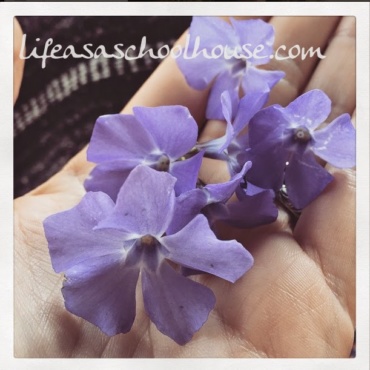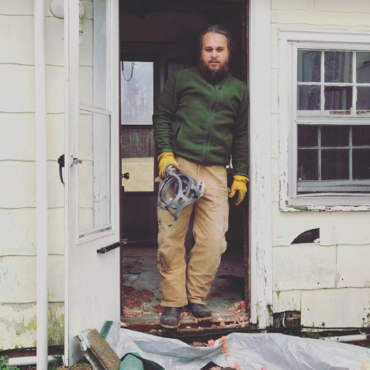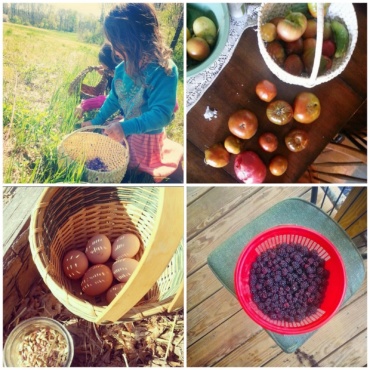What’s your biggest gardening challenge right now? Let’s explore some great ideas on how you and your garden can be healthy and alive with essential oils. With this you’ll find out that gardening with essential oils is the best way.
Make sure to get our EO gardening guide here:
How do Essential Oils work?
In recent years there has been a resurgence in interest surrounding essential oils, and with good reason–they’re powerful tools for so many aspects of life.
It’s like plant concentrate that we can have in our homes and use at the moment they’re most needed and as the base for everything from cleaning products to skincare to animal care and of course–in the garden.
When you think about it, it makes so much sense to use plants for plants–after all, they are made of the same kinds of ingredients, just like humans and plants. We’re all carbon, oxygen, and protein. Sure, there are variables, but ultimately using nature to deal with nature is always going to be the most holistic option because it’s always about achieving balance and harmony through diversity and mutual support.
At a cellular level, essential oils are able to influence the health of the plants in our garden–and they can be powerful tools to help use reap bigger harvests, grow healthier plants and as a result have produce that is more healthful and beneficial for us to consume and enjoy.
What are essential oils?
Essential oils are tiny molecules of aromatic compounds that have been harvested from plants. These compounds carry the healthful benefits these plants are known to carry. By using the essential oils, we can affect the life of our garden, and of ourselves, at a molecular level.
Purity, as it is with the foods we eat, will make all the difference. It will make the oils you use either medicine or potentially harmful. We are what we eat, even more so, we are what our food eats.

Start at the beginning.
All too often people start their learning of good gardening practices by dealing with the symptoms that arise–in other words, gardeners look for pesticides, fungicides and herbicides.
Sometimes in modern healthcare we lean toward this kind of treatment as well. But what is even more efficient is using preventive and proactive wellness tactics to maximize garden health–almost exactly the same methods we should consider for our own health, we should consider for the garden.

Let me break this down.
#1. Soil.
As with human health, we often start dealing with issues only when the symptoms present themselves. Sadly, at this stage of the game it can be difficult to reign the situation back in. It’s at least much harder than it would have been to plan for it at an earlier stage.
Soil is like the gut of the plant.
Ultimately, the health of the plant relies entirely on the nutrition that the soil has to offer, on the balance of organisms and water it holds. Just like our health, bacteria is essential. Using fungicides can be a detriment as they kill any and all bacteria they come in contact with. Fungicides can be the same.

A good healthy soil will have countless microorganisms and using these harsh options can destroy the nutrition making it difficult to ever return that spot to balance. Once that door is open, much in the same way that an anti-biotic ought to be followed with a probiotic, we need to be ready to inoculate that area with living soil, and then feed it to support it regaining a healthful balance.
As an alternative to fungicides, consider using oils that promote a fungal balance. Simply making a blend of about 16 oz of water and a few drops of essential oil like Tea Tree or Oregano or Clove can help improve the fungal balance while also offering the plants added benefits.
#2. Water
The influx of chemicals in our gardens can sometimes be out of our control. From standard air pollutants to neighboring farms or households using products like glyphosate (round up), it can be difficult to protect our spaces from these influences.
Water quality is also a key component in the holistic care of a garden.
Planning for good water is easier before they start to wither than in the heat of the summer sun. Certain oils can play a role in lowering the toxicity of your water and come with added benefits. For example, using lemon in water will actually break down petrochemicals and other toxic inputs and improve the quality of the water and also work well to attract certain pollinators.
Water tip: Add lemon essential oil!
#3. Air.
We can’t skip air quality!
Of course, this is a bit more out of our control, but it’s still one of my favorite topics. As with anything, we are capable of doing more than we likely think. We can do so much to improve our environment, even if it is our own backyard.
The first best step is diversity. Planting perennials, trees, bushes, flowers, and anything else you can–particularly natives–will improve the air quality that is nearest to your plants.
Even in the most polluted areas, these plants do several things–provide beauty, attract diverse wildlife, call up nutrients found deep in the soil and do an amazing job cleansing the air that surrounds your garden space.
Adding plant diversity can take time, but studies have actually shown that having a single rose bush in a garden improves the quality of the plants grown within. Plants communicate, both underground and in the breeze. Also, the air is what carries the smells to those pollinators we want to attract!
So, how do essential oils fit in?
Well, they make it possible to get these benefits before you have a chance to grow the plants. With minimal investment, you’re able to boost the quality of the air your plants are breathing by simply using oils in the garden.

Air borne essential oils:
- Hang a bunting that you can apply oils to.
- Make a simple spray of 16oz of water and 2-3 drops of essential oils like geranium and basil
#4. Companion planting.
In much the same way those diverse plants improve the environment and nutrient availability of the garden, and attract pollinators and other beneficial wildlife, they can prevent other pests and also enhance the flavors of the plants nearby.
If you’ve ever grown basil with your tomatoes, you know that some things just thrive better together! Using essential oils, you can mimic this alliance simply and easily.
It’s so simple to make a tomato herbal spray using a few drops of basil in 16 oz of water and mist the plant regularly. Bergamot actually detracts deer, so a spritz of this in areas they’re more drawn to can help keep them away. Slugs hate cedarwood, so using a drop or two of cedarwood on cotton balls or popsicle sticks at the base of lettuces or seedlings can help prevent a slug invasion.
#5. Dealing with symptoms.
Often we can’t know for sure what the soil conditions are like, particularly when dealing with new property.
The risks of using oils in the garden are almost zero, so starting by adding a quick weekly routine can help enhance the soil regularly. Like when we talk about eating healthfully, we have to retrain our minds a bit if we want to shift into holistic gardening. When we are used to getting meds or garden inputs because we have seen the symptom arise, we need to get used to just eating healthfully all the time–so as to achieve the healthful life we want for ourselves and our plants.

While this all may seem like a lot of hard work, when you’re an avid gardener it becomes one of the most satisfying elements to be able to work with our plants with other plants!
In my mind, the Garden of Eden was a space of magnificent diversity, a place in which essential oils were blowing on every breeze–distributed to all that lived within. This kind of synergy is something we can all strive for and get closer to, it is worth every effort.
Top Essential Oils for gardening
Having essential oils on hand is like having a garden of bottles that are at your disposal whenever you most need them. They offer a broad range of potential benefits, and anyone oil can do a myriad of different things.
Peppermint
Is an excellent tool in the garden. It repels many pests, in particular aphids and rodents. Make a spray for aphids–perhaps mix it with a small amount of unscented liquid castile soap and apply to the underside of infected leaves. More proactively, use it regularly as a mist in your garden area. Additionally, peppermint is very cooling and a quick spritz of that same spray on the back of your neck on a hot day can help rejuvenate and cool off.
Cedarwood
Repels snails, slugs, moths and other known predators in the healthy garden. It also offers fungal balancing qualities and can improve the health of your soil at a molecular level. Make a spray, use on cotton balls or add a few drops to the water you water your plants with.
Geranium
A wonderful repellent of many bugs, it’s strong floral scent is also a draw for many pollinators like butterflies, bees and hummingbirds.
Would you like a longer list of holistic essential oil options for your garden? Get our Gardening Guide with recipes + a recent gardening webinar here.
Get gardening with essential oils now!
That’s it. That’s all I’m gonna share with you for now. If you didn’t know about these great tools as a means of keeping your garden safe and secure, now you know.
If you need anything post a comment. We’d love to answer your questions. And yeah, get out there, garden, get your fingernails dirty. All right, we’ll talk to you later.
Ready to start gardening with essential oils? Get our guide here:






Add Comment